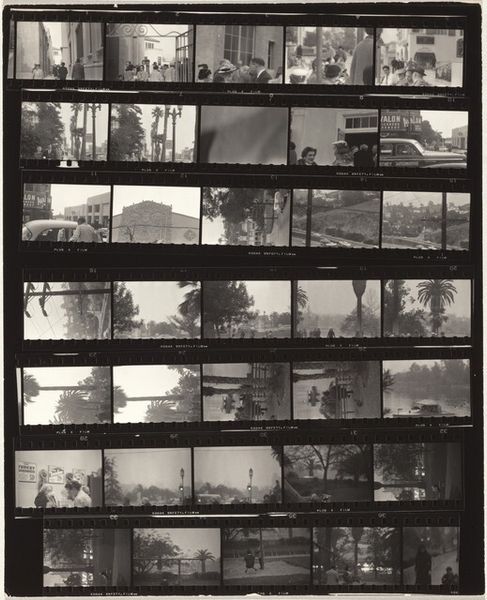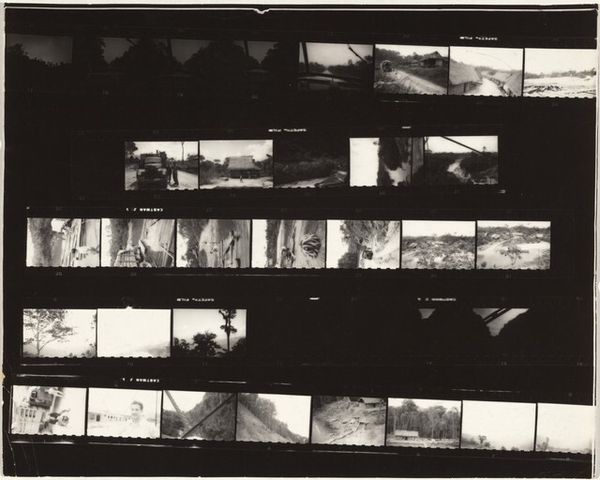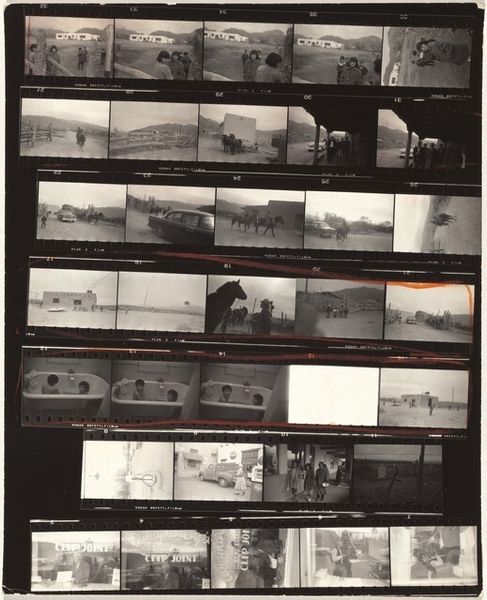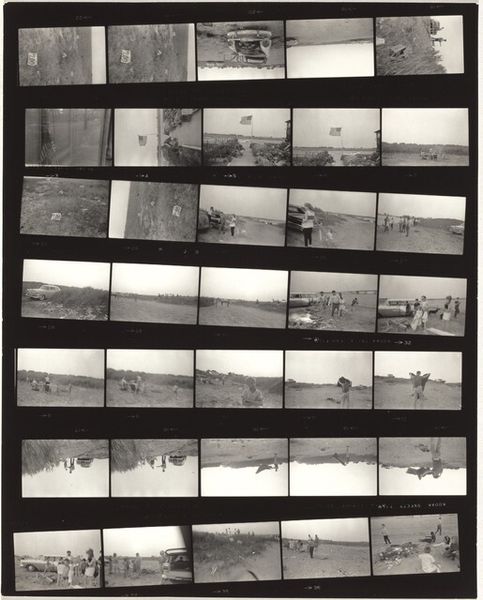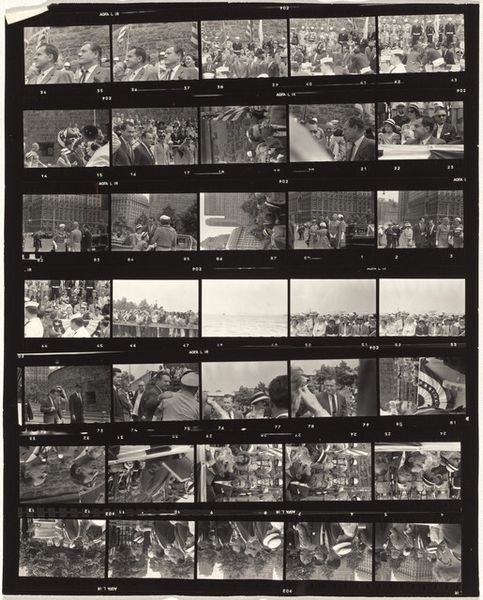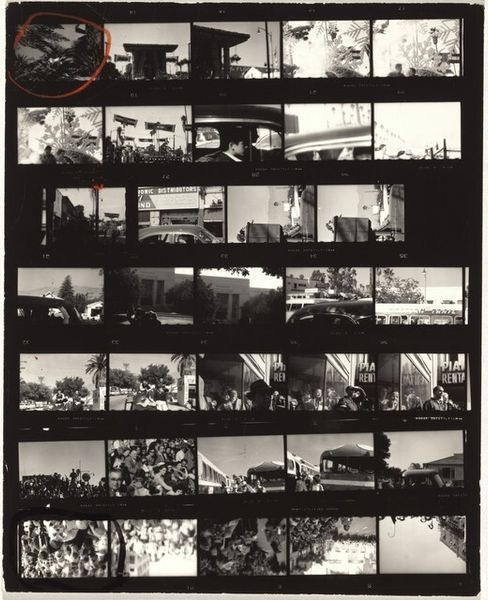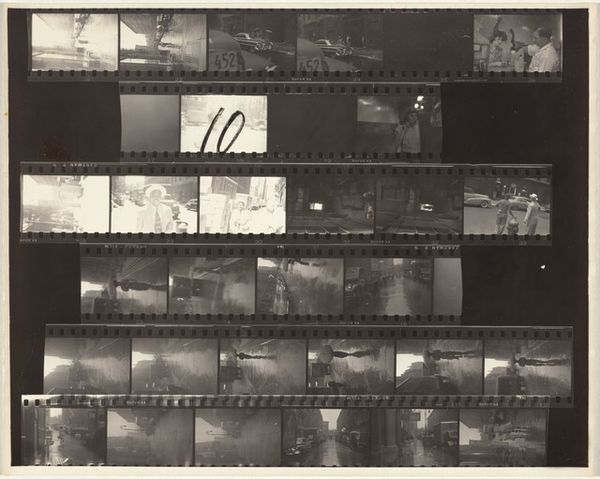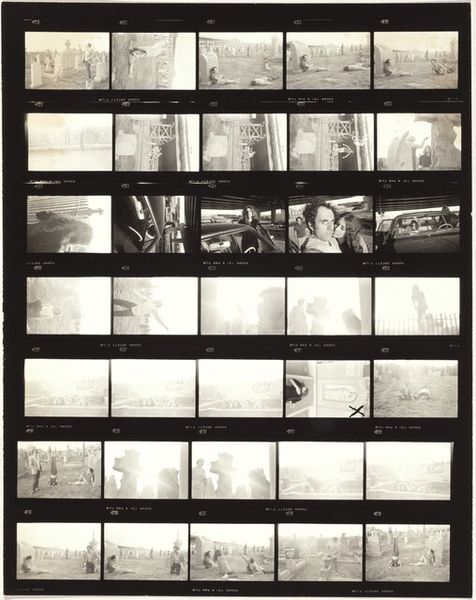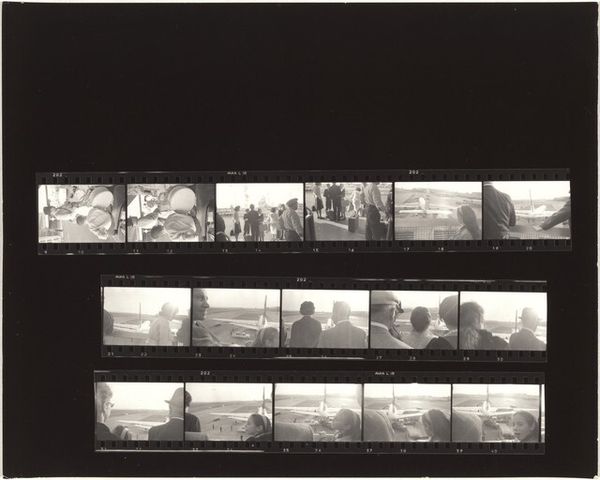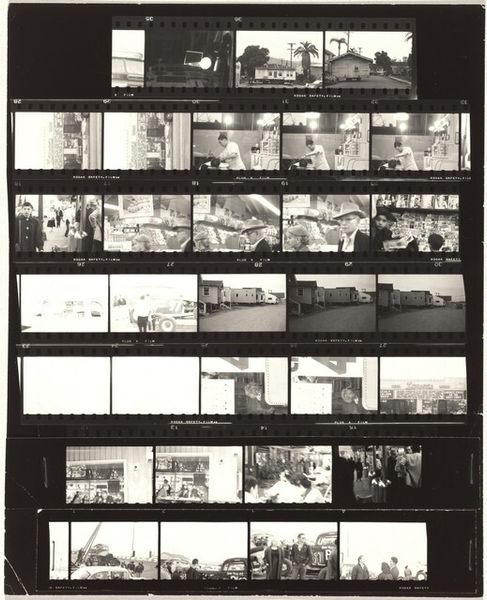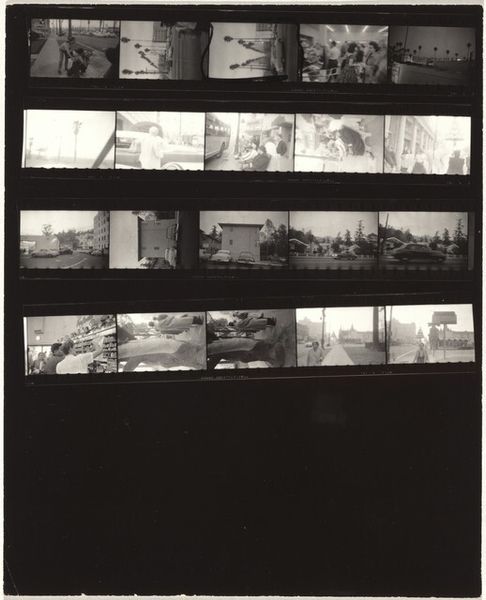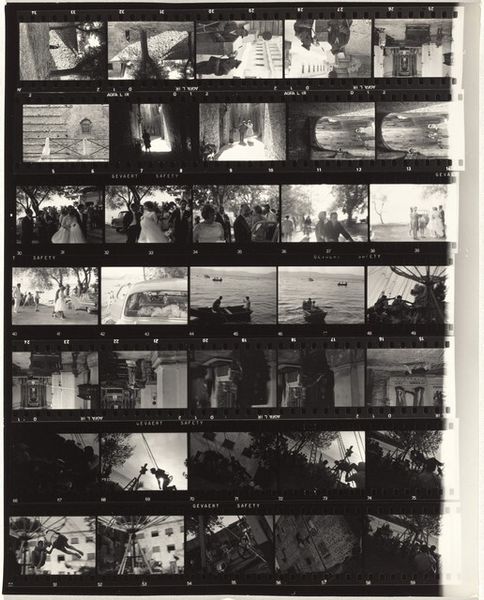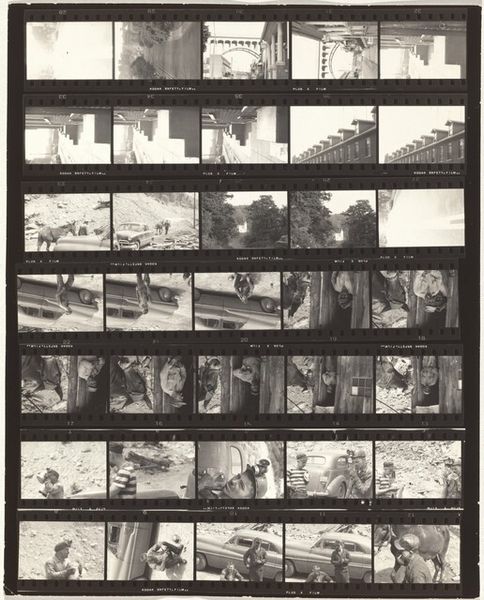
photography, gelatin-silver-print
#
black and white photography
#
street-photography
#
photography
#
gelatin-silver-print
#
monochrome photography
#
pop-art
#
monochrome
#
monochrome
Dimensions: overall: 25.3 x 20.5 cm (9 15/16 x 8 1/16 in.)
Copyright: National Gallery of Art: CC0 1.0
Curator: Here we have Robert Frank’s "Guggenheim 523—Rose Bowl, Pasadena, California," from January 1956, a gelatin-silver print filmstrip offering glimpses into mid-century America. My first reaction is almost cinematic, like a storyboard waiting for its film adaptation. Editor: Yes, I see what you mean. There's a fragmented feel. Not just snippets of an event, the Rose Bowl, obviously, but also…almost glimpses of American anxieties packaged in this iconic setting. I notice, even with the celebratory air, there's something vaguely unsettling about the way these images are strung together. Curator: Unsettling, yes! Perhaps it is a deconstruction of the American dream into fleeting, contrasting images. You’ve got sun-drenched palms, an intense crowd, a solemn looking man with a flag or banner and architectural close-ups interspersed with vast empty landscapes. The architectural details of the Rose Bowl intermingle with what feel like candid shots. It's about so much more than just a football game, more so an overview of the social event. Editor: Exactly, you put your finger right on it! Frank often imbued everyday scenes with a layered symbolism that reveals a more complex national identity. Even just the film strip presentation—the clear indexicality in a serial form— it gives you a window onto how this nation makes images of itself, what the social event looked like. The repetition hints at how we internalize and disseminate the mythic structures around national celebration. The football game serving, almost, like the site of social ritual! Curator: I agree. Looking at it this way, one has to think about the role the black-and-white film plays. It distances us, creating this vintage haze. Are we looking at nostalgia or critique? The strong contrast seems too blatant to miss, hinting at divides of race and class during this booming post-war moment. Editor: The monochrome definitely emphasizes the formal aspects. We have to consider this as well, Frank used the contrast to accentuate emotional dimensions through light and shadow, which speaks so well of psychological weight during that time. It speaks about a deeper feeling that Frank conveys, almost capturing a collective emotional register through a set of diverse photographs. Curator: Ultimately, it’s a series of glimpses, frozen in time, almost daring us to interpret them, reimagine what they mean about an image of an event, both the game itself, but the day. The entire social performance laid bare. Editor: Right! I find myself drawn back to the man with the flag, trying to piece together the larger narrative, what Frank sought to illuminate by pairing it alongside a mountain backdrop and parade car. A visual memory that keeps replaying itself...
Comments
No comments
Be the first to comment and join the conversation on the ultimate creative platform.
